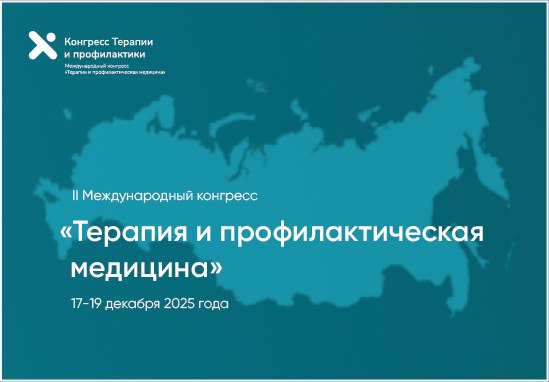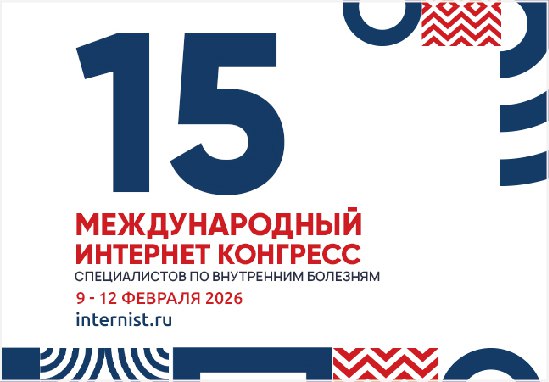Intravascular ultrasound and angiography during percutaneous coronary intervention in patients with acute myocardial infarction: survival and cost-effectiveness analysis (one-year follow-up)
https://doi.org/10.15829/1728-8800-2025-4378
EDN: RNXUOI
Abstract
Aim. To determine the number of years of lost life (YLL) as a result of not using intravascular ultrasound (IVUS) during percutaneous coronary intervention (PCI) in patients with acute ST-segment elevation myocardial infarction (STEMI), as well as to conduct a costeffectiveness analysis.
Material and methods. This randomized controlled study included 431 patients with acute STEMI treated at the Department of X-ray Surgical Diagnostic and Treatment Methods of the Vsevolozhsk Clinical Interdistrict Hospital. Patients of the first group (n=161) underwent IVUS-guided PCI, while patients of the second group (n=270) — angiography-guided PCI. The inclusion criterion was electrocardiographic changes corresponding to acute STEMI, followed by coronary angiography confirmation. Patients with cardiogenic shock were excluded from the study due to expected higher rates of inhospital and one-year mortality compared to patients with acute STEMI without cardiogenic shock. Traditional life tables were constructed, and an analysis of differences in death probability within one year after surgery was performed. A model was constructed showing the number of lives could have been saved if all patients in the PCI angiography group had been supplemented with IVUS. The number of patients who need to be treated to prevent one adverse outcome and the cost of life-years saved due to the implementation of IVUS were calculated.
Results. Not using IVUS for coronary artery stenting in patients with acute STEMI (n=270) potentially results in YLL losses of 117,3 personyears. The number of patients who need to be treated to prevent one adverse outcome was 12,9 (95% confidence interval: 7,3-104). The cost of one saved person-year of life for the regional Ministry of Health was RUB 195 666 in the analyzed period. At the same time, the increase in costs for one additional life saved during the year is RUB 1 105 000.
Conclusion. IVUS in patients with acute STEMI has high economic potential and social orientation in a long-term analysis.
About the Authors
A. A. RodionovRussian Federation
Andrey А. Rodionov — Department of Healthcare Organization and Informatization, Associate Professor
Tver
V. A. Soloviev
Russian Federation
Vitaliy А. Soloviev — Department of X-ray Surgical Diagnostic and Treatment, Surgeon
Vsevolozhsk
V. N. Ardeev
Russian Federation
Vladimir N. Ardeev — Department of X-ray Surgical Diagnostic and Treatment, Head
Vsevolozhsk
O. E. Zauralov
Russian Federation
Oleg E. Zauralov — Department of X-ray Surgical Diagnostic and Treatment, Surgeon
Vsevolozhsk
A. V. Solovieva
Russian Federation
Alla V. Solovieva — Department of Healthcare Organization and Informatization, Head
Tver
References
1. Ivanov VA, Movsesyants MYu, Trunin IV. Intravascular research methods in interventional cardiology. Medpraktika-M, 2008. 212 p. (In Russ.) ISBN: 978-5-98803-134-5.
2. Demin VV. Clinical guidelines for intravascular ultrasound examination. O.: IPK Yuzhny Ural, 2005. — 400 p. (In Russ.)
3. Vlodaver Z, Frech R, Van Tassel RA, et al. Correlation of the antemortem coronary arteriogram and the postmortem specimen. Circulation. 1973;47:162-9.
4. Grondin CM, Dyrda I, Pasternac A, et al. Discrepancies between cineangiographic and postmortem findings in patients with coronary artery disease and recent myocardial revascularization. Circulation. 1974;49:703-8.
5. Arnett EN, Isner JM, Redwood DR, et al. Coronary artery narrowing in coronary heart disease: comparison of cineangiographic and necropsy findings. Ann Intern Med 1979;91:350-6.
6. Mintz GS, Bourantas CV, Chamié D. Intravascular Imaging for Percutaneous Coronary Intervention Guidance and Optimization: The Evidence for Improved Patient Outcomes. J Soc Cardiovasc Angiogr Interv. 2022;1(6):100413. doi:10.1016/j.jscai.2022.100413.
7. Alekyan BG, Grigoryan AM, Staferov AV, et al. X-ray endovascular diagnostics and treatment of diseases of the heart and blood vessels in the Russian Federation — 2021. Endovascular surgery. 2022;9 (special issue):5-67. (In Russ.) doi:10.24183/2409-4080-2022-9S-S5-S254.
8. Alekyan BG, Boytsov SA, Manoshkina EM, et al. Analysis of Russian national indicators of myocardial revascularization in patients with acute coronary syndrome in 2022. Russian Journal of Endovascular Surgery. 2023;10(3):260-9. (In Russ.) doi:10.24183/2409-4080-2023-10-3-260-269.
9. Demin VV, Babunashvili AM, Kislukhin TV, et al. Application of intravascular physiology methods in clinical practice: two-year data from the Russian registry. Russian Journal of Cardiology. 2024;29(2):5622. (In Russ.) doi:10.15829/1560-4071-2024-5622.
10. Demin VV, Babunashvili AM, Ardeev VN, et al. Russian registry for the use of intravascular imaging and physiology methods: two-year results. International Journal of Interventional Cardioangiology. 2023;74(3):52-75. (In Russ.) doi:10.24835/1727-818X-74-52.
11. Babunashvili AM, Azarov AV, Ardeev VN, et al. Consensus document of the expert group of the Russian scientific society of interventional cardioangiologists. On the routine use of intravascular imaging modalities (IVUS, OCT) during X-ray endovascular interventions for certain types of coronary artery lesions in chronic coronary syndrome and on the need to equip all X-ray operating rooms in the country with intravascular imaging systems. International Journal of Interventional Cardioangiology. 2023;74(3):9-51. (In Russ.) doi:10.24835/1727-818X-74-9.
12. Demin VV. Modern methods of intravascular visualization — directions of development, search for new technologies. International Journal of Interventional Cardioangiology. 2014;(36):35-41. (In Russ.)
13. Zhang J, Gao X, Kan J, et al. Intravascular Ultrasound Versus Angiography-Guided Drug-Eluting Stent Implantation: The ULTIMATE Trial. J Am Coll Cardiol. 2018;72(24):3126-37. doi:10.1016/j.jacc.2018.09.013.
14. Räber L, Mintz GS, Koskinas, et al. ESC Scientific Document Group. Clinical use of intracoronary imaging. Part 1: guidance and optimization of coronary interventions. An expert consensus document of the European Association of Percutaneous Cardiovascular Interventions. Eur Heart J. 2018;39(35):3281-300. doi:10.1093/eurheartj/ehy460.
15. Russian Society of Cardiology (RSC). 2020 Clinical practice guidelines for Acute ST-segment elevation myocardial infarction. Russian Journal of Cardiology. 2020;25(11):4103. (In Russ.) doi:10.15829/29/1560-4071-2020-4103.
16. Hong SJ, Mintz GS, Ahn CM, et al. IVUS-XPL Investigators. Effect of Intravascular Ultrasound-Guided Drug-Eluting Stent Implantation: 5-Year Follow-Up of the IVUS-XPL Randomized Trial. JACC Cardiovasc Interv. 2020;13(1):62-71. doi:10.1016/j.jcin.2019.09.033.
17. Barkalov MN, Atanesyan RV, Matchin YuG. Endovascular treatment of patients with extended and diffuse lesions of the coronary arteries. Cardiology Bulletin. 2020;15(4):10-21. (In Russ.) doi:10.36396/MS.2020.15.4.002.
18. Zauralov OE, Ardeev VN, Demin VV, et al. Intravascular imaging and physiological assessment of coronary blood flow for treatment strategy in patients with acute coronary syndrome. Analysis of Russian registry of intravascular imaging and physiological methods in 2021-2022. Russian Cardiology Bulletin. 2024;19(3):43-52. (In Russ.) doi:10.17116/Cardiobulletin20241903143.
19. Roh JW, Bae S, Johnson TW, et al. KAMIR-NIH Investigators. Impact of Intravascular Ultrasound-Guided Percutaneous Coronary Intervention in Patients With Acute Myocardial Infarction and Chronic Kidney Disease. Circ J. 2023;87(10):1339-46. doi:10.1253/circj.CJ-23-0189.
20. Kim Y, Bae S, Johnson TW, et al. KAMIR‐NIH (Korea Acute Myocardial Infarction Registry‐National Institutes of Health) Investigators [Link]. Role of Intravascular Ultrasound-Guided Percutaneous Coronary Intervention in Optimizing Outcomes in Acute Myocardial Infarction. J Am Heart Assoc. 2022;11(5): e023481. doi:10.1161/JAHA.121.023481.
21. Choi IJ, Lim S, Choo EH, et al. Impact of Intravascular Ultrasound on Long-Term Clinical Outcomes in Patients With Acute Myocardial Infarction. JACC Cardiovasc Interv. 2021;14(22):2431-43. doi:10.1016/j.jcin.2021.08.021.
Supplementary files
What is already known about the subject?
- The main disadvantage of X-ray angiography in endovascular treatment of patients with acute myocardial infarction is the inability of direct plaque imaging.
- Studies have shown a weak correlation between angiographic and histological data.
- Intravascular ultrasound (IVUS) may be considered as a better alternative.
What might this study add?
- IVUS during percutaneous coronary intervention in patients with acute myocardial infarction can improve immediate and long-term outcomes.
- The cost per year of life gained due to the use of IVUS during percutaneous coronary intervention was determined.
Review
For citations:
Rodionov A.A., Soloviev V.A., Ardeev V.N., Zauralov O.E., Solovieva A.V. Intravascular ultrasound and angiography during percutaneous coronary intervention in patients with acute myocardial infarction: survival and cost-effectiveness analysis (one-year follow-up). Cardiovascular Therapy and Prevention. 2025;24(8):4378. (In Russ.) https://doi.org/10.15829/1728-8800-2025-4378. EDN: RNXUOI

























































